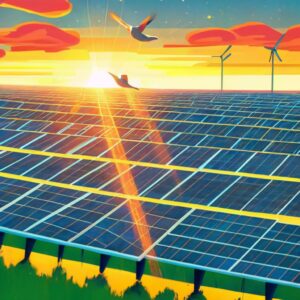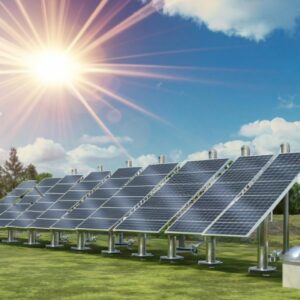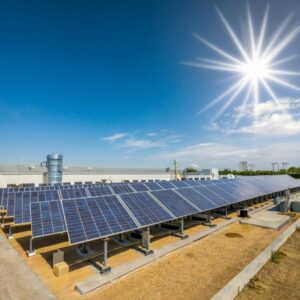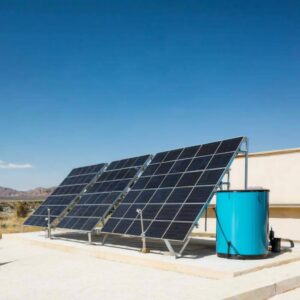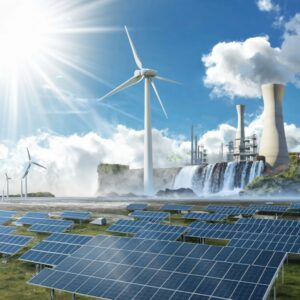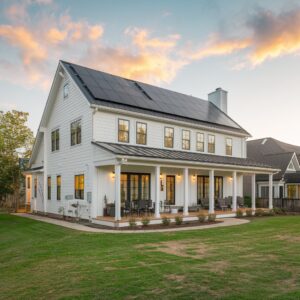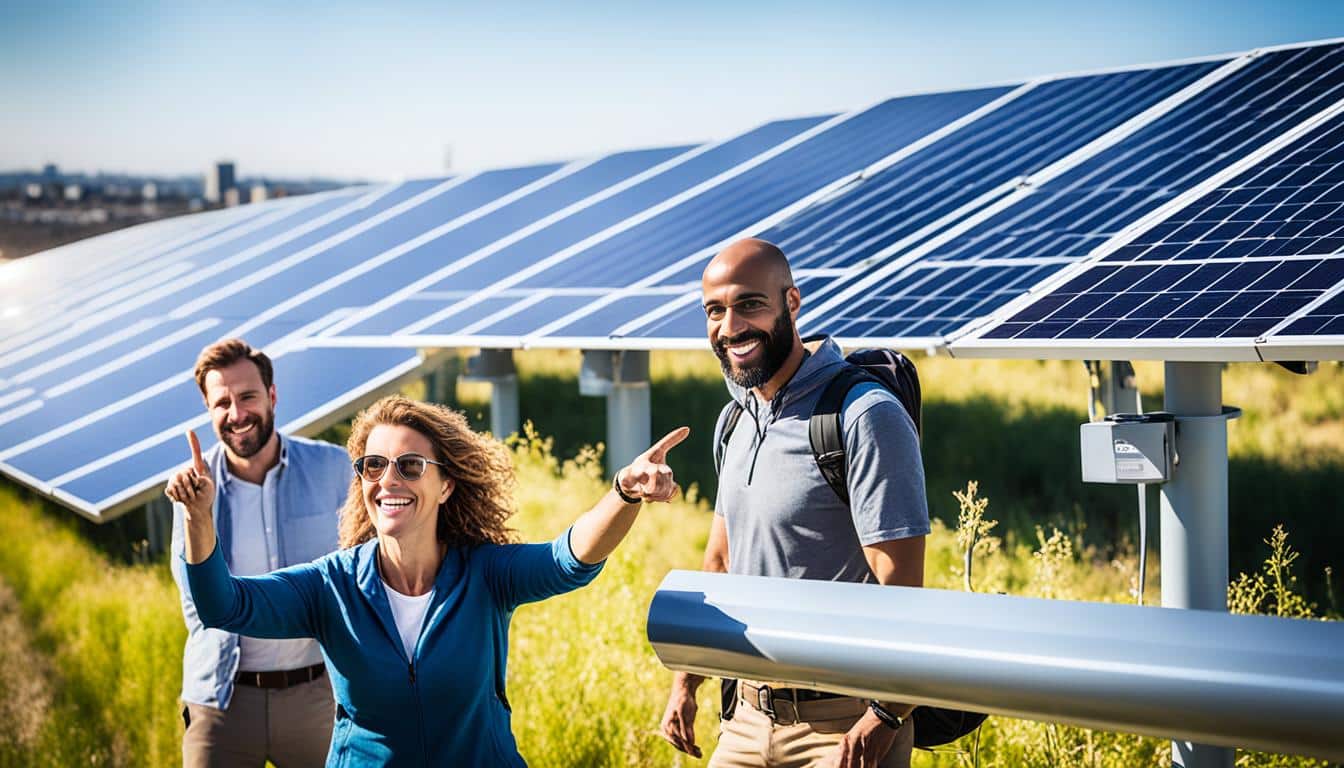
Do you love green projects and need money for your solar ideas? Solar energy grants are here to help. They’re a great chance for both people and groups keen on new clean energy ideas. Applying for these grants means you can turn your plans into real projects. This also helps make our future greener.
The U.S. Department of Energy’s Office of Energy Efficiency and Renewable Energy (EERE) offers these grants. Go to the EERE Funding Opportunity eXCHANGE to get started. There you can find all you need, from available money to how to apply. It’s your first step towards solar grant success.
Learning about the different grant types is very important when you want solar funding. There are competitive chances, self-started ideas, and set grants. Each type might ask for something different. Make sure to read the Notice of Funding Opportunity (NOFO) detail for the right steps.
Getting ready to apply means doing some registrations first. You’ll need an ID, sign up with Login.gov and EERE Funding eXCHANGE, plus set up with Grants.gov and FedConnect. Why all these steps? They make sure you can apply and are eligible there.
Key Takeaways:
- Solar energy grants offer funding opportunities for clean energy innovation.
- Access funding through the EERE Funding Opportunity eXCHANGE.
- Understand the different types of funding available.
- Complete the necessary registrations to ensure eligibility.
Follow the steps and meet all the needs to get your solar project funds. It’s a big chance to help the planet and use less money on energy. So, don’t wait to apply for these grants.
Solar for All: Increasing Access to Affordable Solar Energy for Low-Income Households
The EPA in the US kicked off Solar for All with a $7 billion grant from President Biden’s campaign. It aims to help millions of low-income families get affordable and clean solar power.
States, tribes, governments, cities, and certain nonprofits will get grants. They will use the money to start or grow programs that help low-income families access solar. These programs offer money, help with solar tech, and job training.
With these grants, new solar programs for low-income groups will start. Also, the old ones will grow. Everyone deserves the chance to use solar energy. It can lower bills, give a sense of ownership, and make energy more reliable.
“Solar for All ensures that even those with limited financial resources can reap the rewards of clean solar energy, contributing to a more sustainable and equitable society.”
Solar for All is a part of Biden’s Justice40 Initiative. It aims to make sure 40% of the good from government money goes to those without much. The goal is to have no carbon in power by 2035 and no emissions by 2050.
Benefits of Solar for All:
- Lower energy costs: Solar power can save money on the power bill for low-income people.
- Community ownership: It makes a community feel more involved in using clean energy.
- Energy resiliency: Families are more ready for blackouts because they make their own power.
- Environmental impact: Using more solar lessens the need for dirty fossil fuels, making the air cleaner.
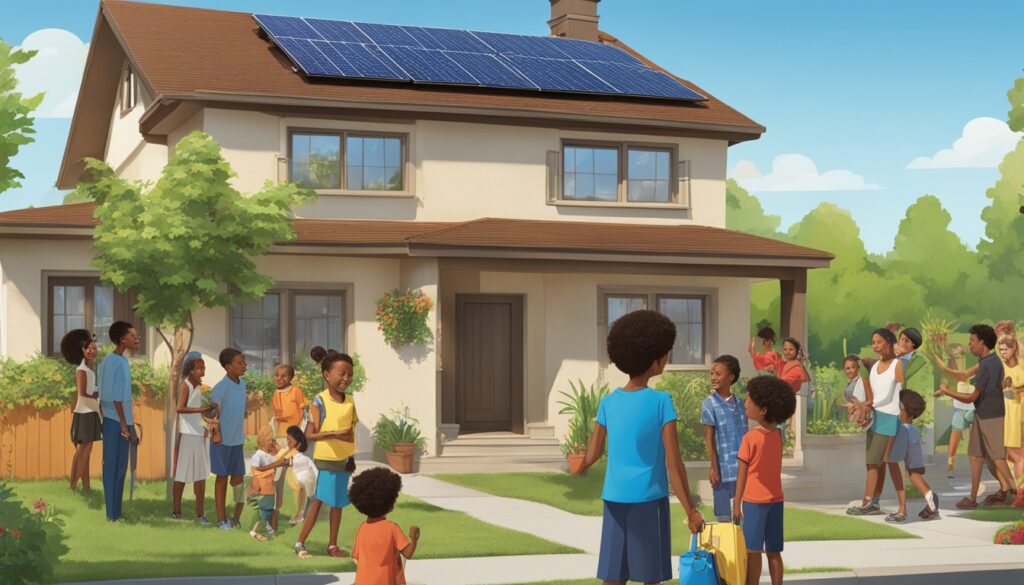
There’s a picture of solar panels on a house for Solar for All. It’s proof that this program is making solar power cheap and better for people with less money.
Solar for All helps families everywhere in the US get solar power. It means a cleaner and safer future for everyone.
The Greenhouse Gas Reduction Fund: Transforming Access to Clean Energy Projects
The Greenhouse Gas Reduction Fund (GGRF) fights climate change. It’s part of the Inflation Reduction Act and totals $27 billion. This fund aims to bring cleaner energy to all, especially places that usually miss out. It has three main parts, one being Solar for All, which helps fund projects that cut emissions.
With the GGRF, public and private money will flow into clean energy efforts. This will not only help the environment but also bring more fairness to the way we use energy.
The Solar for All competition is key in this effort. It aims to get us using no-carbon power by 2035 and to zero net emissions by 2050. The EPA has all the info you need to apply on their site, including how to qualify and what you could win.
States, territories, and certain nonprofits can join in. They have a shot at big funding. The prizes include support for single-state projects and others that cross state lines.
The deadline to join in is September 26, 2023.
Table Title: Greenhouse Gas Reduction Fund (GGRF) Programs
| Program | Description |
|---|---|
| Solar for All | Aims to increase access to affordable, resilient, and clean solar energy for low-income households |
| Program 2 | Description of Program 2 |
| Program 3 | Description of Program 3 |
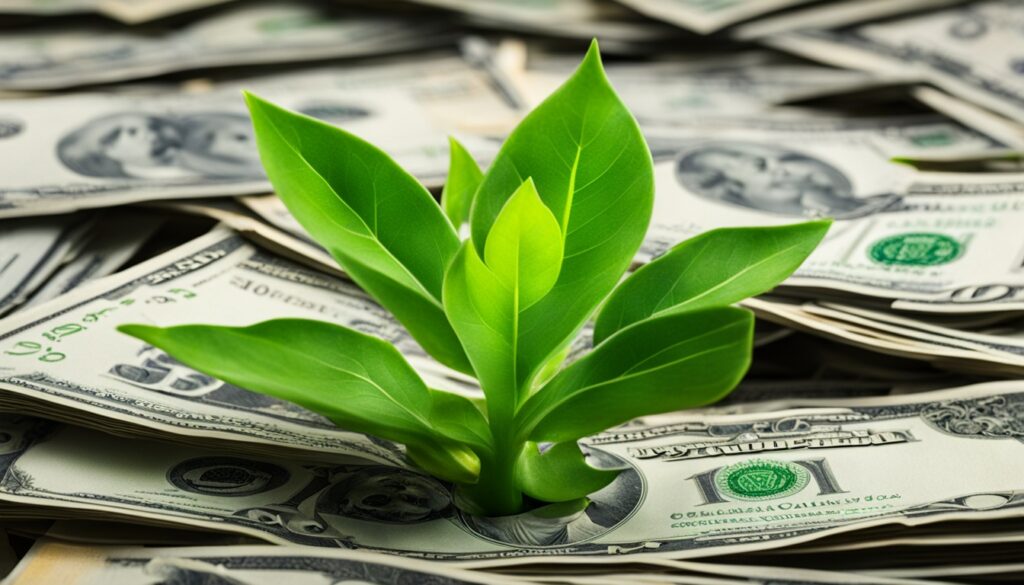
The Greenhouse Gas Reduction Fund opens doors to cleaner energy. It’s your chance to make a difference. Join the Solar for All competition to get funding for your energy saving projects. Let’s work together towards a cleaner and fairer energy future. Don’t miss out on this game-changing opportunity!
Conclusion
Solar energy grants are a key to making green dreams come true for people and groups. The U.S. Department of Energy and the Environmental Protection Agency provide funds. This helps more people access affordable and clean solar power. By applying through the EERE and submitting a strong proposal, you can boost your chances of getting support for solar projects.
The Greenhouse Gas Reduction Fund is changing how people see clean energy. It’s making sure that everyone, especially those in need, can benefit. The Solar for All program is giving out grants to help low-income families. This will lower energy bills, create jobs, and cut down on climate change. With these grants, we’re moving towards a future where solar power is for everyone.
Solar grants and funding from programs like Solar for All are vital for a cleaner future. They allow people to use solar energy, which helps the environment. With these funds, we can change how we use energy for the better. This means a world that’s fair and earth-friendly for all future generations.

